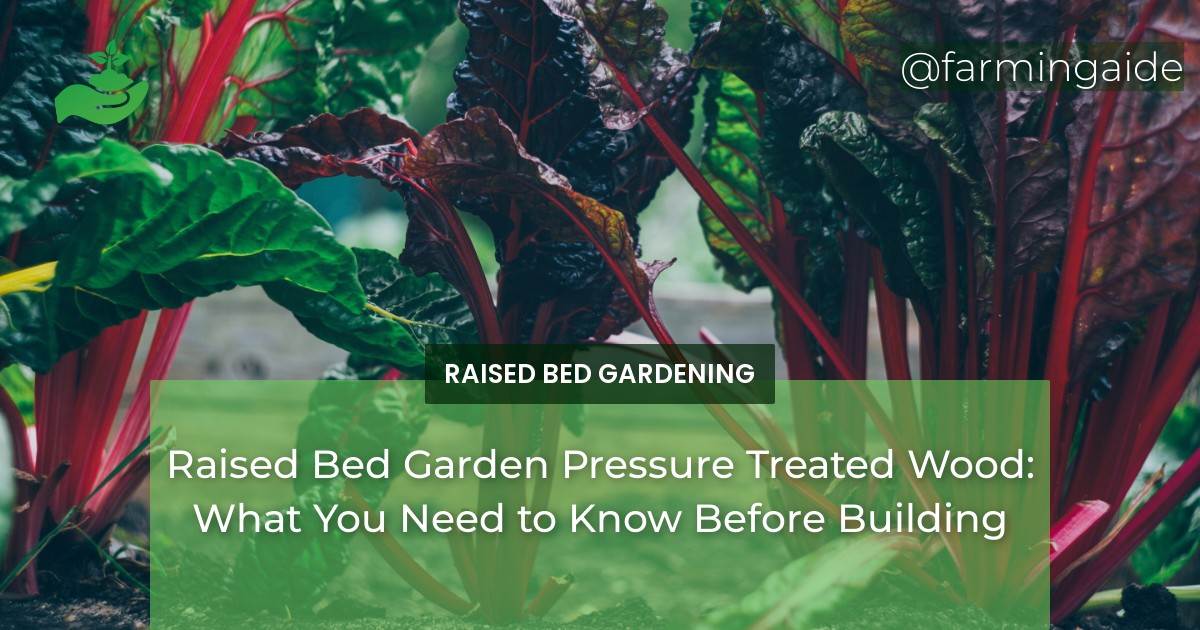Raised bed gardening has become increasingly popular in recent years, offering a convenient and efficient way to grow plants in a limited space. One of the key decisions when building a raised bed garden is choosing the right type of wood for the frame. While there are many options available, pressure treated wood is often a top choice due to its durability and resistance to decay. However, there are also potential risks associated with using pressure treated wood in gardening. In this article, we will explore the benefits and risks of using pressure treated wood for raised bed gardens, as well as alternative options and tips for safe use and maintenance.
Benefits of Using Pressure Treated Wood for Raised Bed Gardens
Pressure treated wood is a type of wood that has been treated with chemicals to increase its resistance to rot, insects, and decay. This makes it a popular choice for outdoor projects, including raised bed gardens. Here are some of the key benefits of using pressure treated wood for raised bed gardening:
- Durability and longevity: Pressure treated wood is known for its strength and durability, making it a long-lasting option for raised bed gardens.
- Resistance to rot, insects, and decay: The chemicals used in pressure treatment make the wood less susceptible to damage from moisture, insects, and fungi, which can extend the lifespan of your raised bed garden.
- Cost-effectiveness: Pressure treated wood is often more affordable than other types of wood, making it a budget-friendly option for building a raised bed garden.
Risks of Using Pressure Treated Wood for Raised Bed Gardens
While pressure treated wood offers many benefits, there are also potential risks associated with using it in gardening. Here are some of the key risks to consider:
- Potential leaching of chemicals into the soil: The chemicals used in pressure treatment can potentially leach into the soil over time, which can be harmful to plants and the environment.
- Harmful effects on plant growth and health: Some plants may be more sensitive to the chemicals in pressure treated wood, which can affect their growth and health.
- Health risks for humans and wildlife: Exposure to the chemicals in pressure treated wood can pose health risks for humans and wildlife, especially if the wood is burned or ingested.
Alternatives to Pressure Treated Wood for Raised Bed Gardens
If you are concerned about the potential risks of using pressure treated wood in your raised bed garden, there are alternative options available. Here are some alternatives to consider:
- Natural untreated wood: Cedar, redwood, and cypress are all naturally resistant to decay and can be used as alternatives to pressure treated wood.
- Composite materials: Made from a combination of recycled plastic and wood fibers, composite materials offer a durable and eco-friendly option for raised bed gardens.
- Recycled or salvaged materials: Bricks, concrete blocks, and stone can all be repurposed to create a raised bed garden, making them a sustainable and cost-effective option.
Tips for Safe Use and Maintenance of Pressure Treated Wood in Raised Bed Gardens
If you do choose to use pressure treated wood for your raised bed garden, here are some tips to ensure safe use and maintenance:
- Choose the right type of pressure treated wood: Look for wood that has been treated with low levels of chemicals, such as ACQ or CA-B, to minimize the risk of leaching.
- Use a plastic barrier or lining: To prevent direct contact between the wood and soil, consider using a plastic barrier or lining inside the raised bed.
- Avoid using treated wood for edible crops or sensitive plants: If you are concerned about the potential effects of the chemicals on your plants, it is best to avoid using treated wood for edible crops or sensitive plants.
- Proper disposal and handling: When disposing of old or damaged treated wood, it is important to follow proper safety precautions to avoid exposure to the chemicals.
What are the Important Factors to Consider When Choosing Pressure Treated Wood for Raised Bed Gardens?
When choosing pressure treated wood for raised bed gardens, it’s crucial to consider the safety of the materials. Look for wood that is suitable for food contact and resistant to decay and pests. This comprehensive guide to raised bed gardening emphasizes the importance of selecting the right pressure treated wood for a successful garden.
Conclusion
In conclusion, pressure treated wood can offer many benefits for raised bed gardening, but it is important to be aware of the potential risks and take necessary precautions. Consider alternative options and follow safe use and maintenance practices to ensure a successful and safe raised bed garden. By making informed decisions and taking proper precautions, you can enjoy the benefits of pressure treated wood without compromising on safety.
RELATED ARTICLES:


